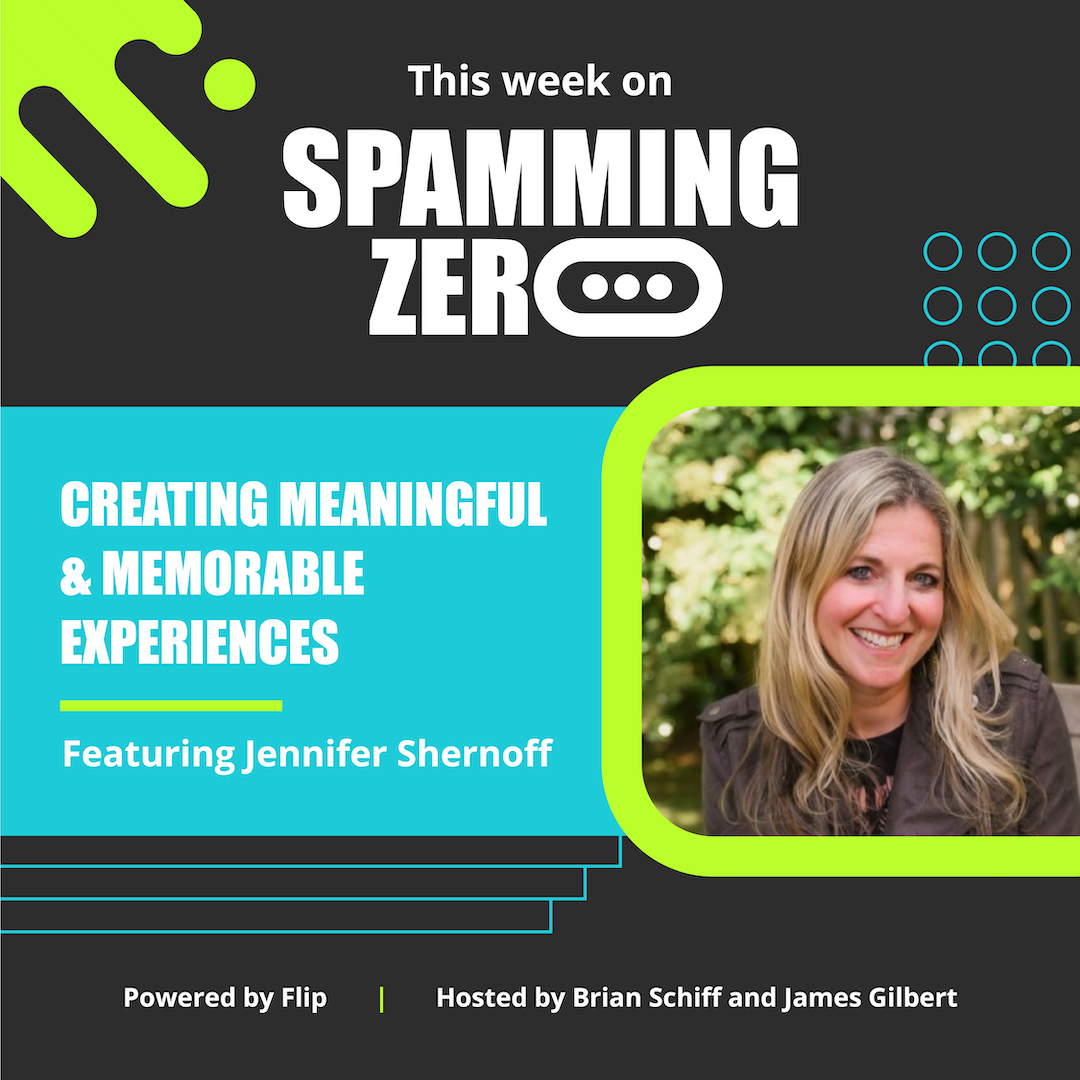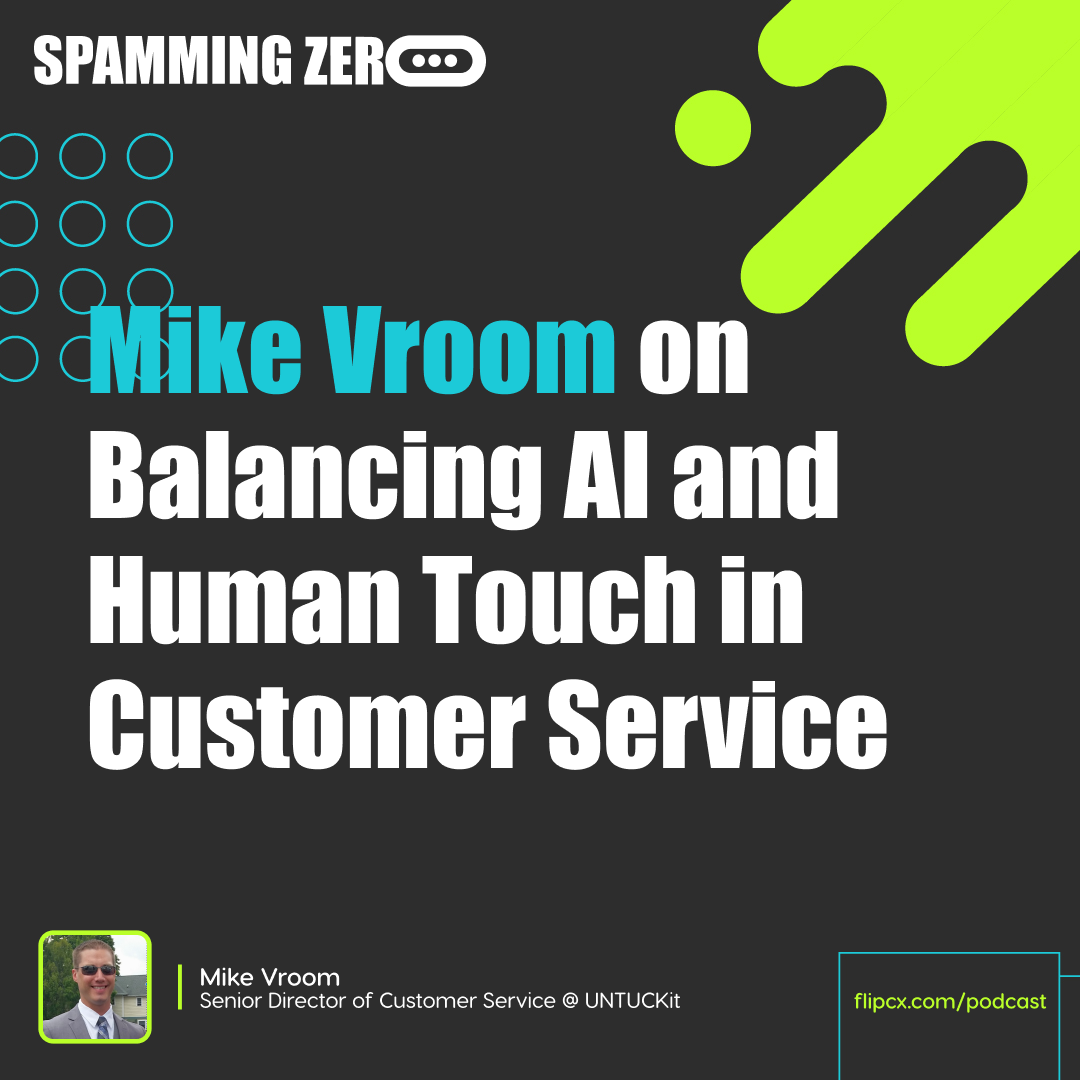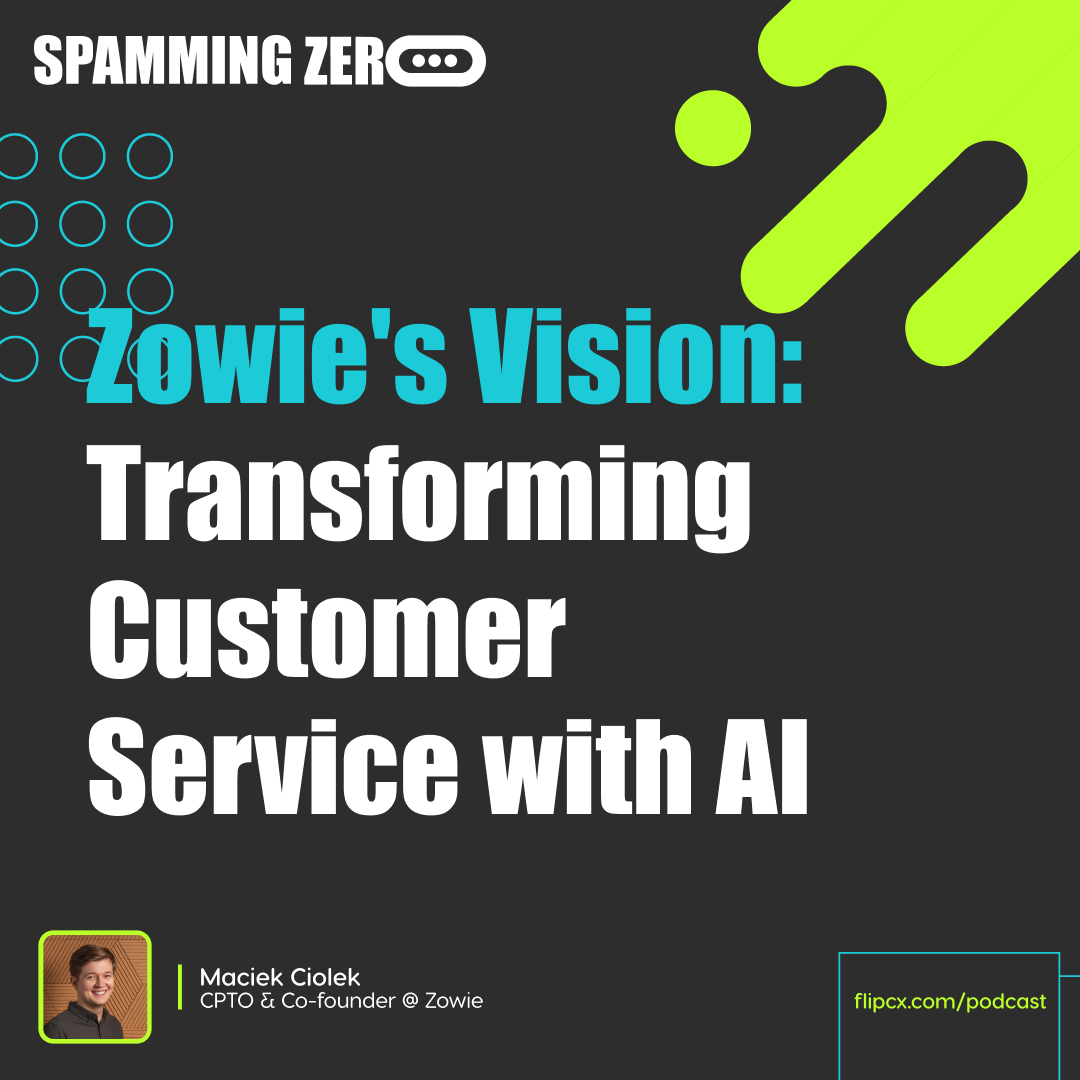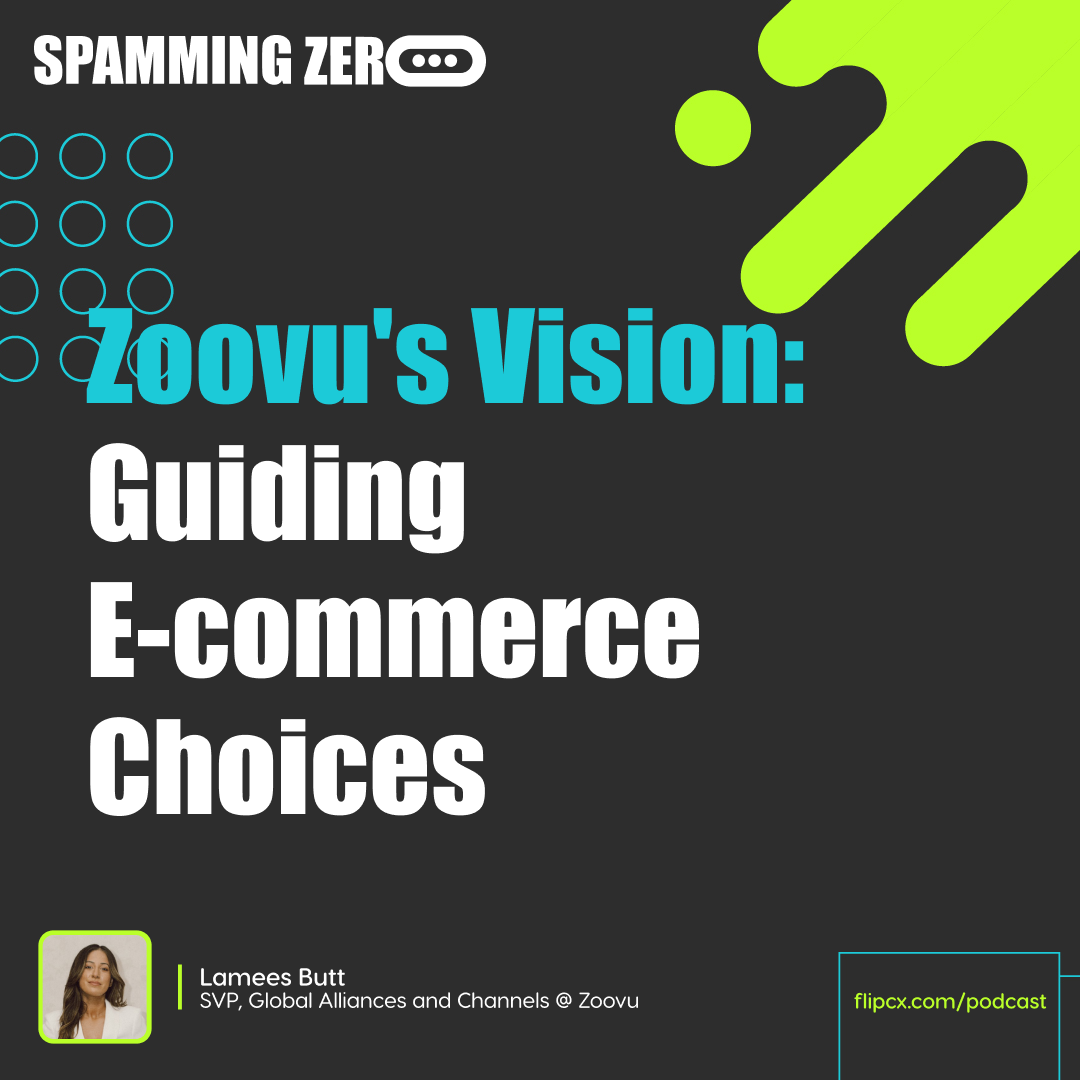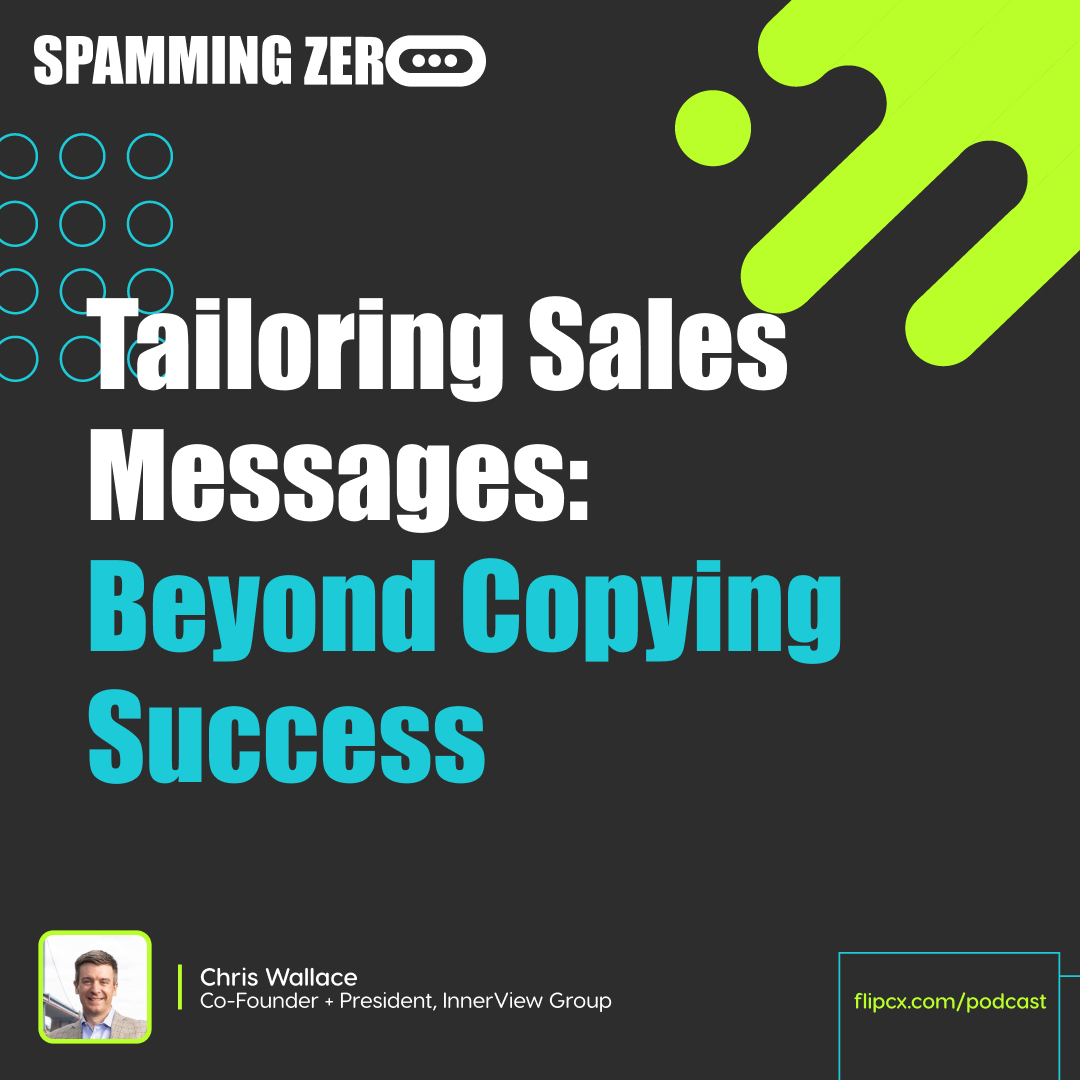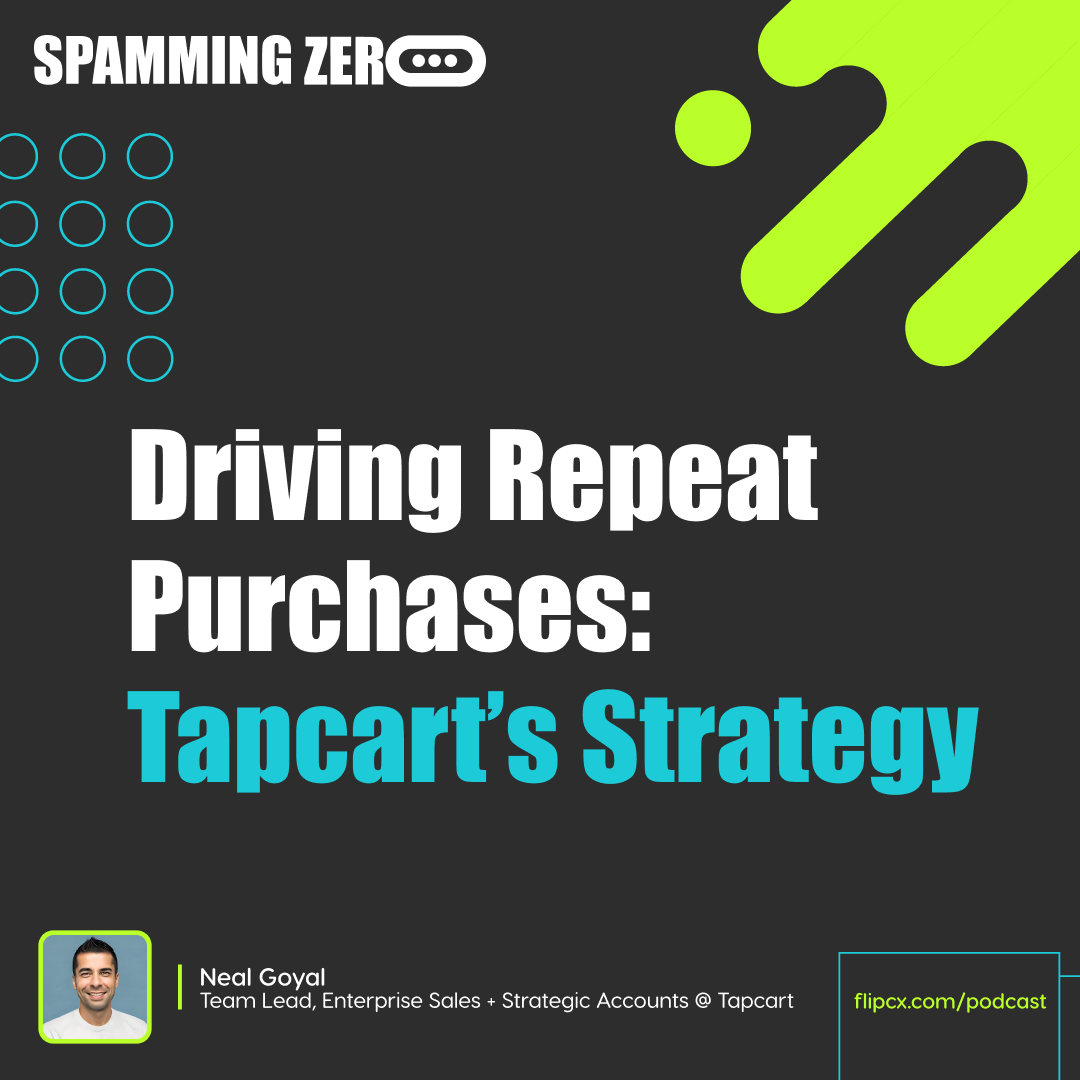Episode 18: Creating Meaningful & Memorable Experiences
- 0.5
- 1
- 1.25
- 1.5
- 1.75
- 2
James: Welcome to another episode. So excited for this. We are going to be joined by Jennifer Kline Shernoff. She's a seasoned, energetic leader with a passion for building. She brings more than 20 years of experience in financial services, education and technology, B2B, B2B2B and B2C companies, and has held a variety of leadership roles in marketing customer experience, and customer support, and product management. The last four years, she helped build AI products and services and conversational AI at LivePerson and Ada Support. Her superpower is recognizing patterns and helping transform organizations by connecting the people, processes, and experience, and products that make those organizations exceptional. Stay tuned for this episode with Jennifer Klein Shernoff. We'd like to thank our current sponsor of the Month, Aircall. Aircall. io, go check them out. Love what they do. They also just reached 100 million in revenue, which is incredible. We partner with them, they are a big part of our ecosystem. Aircall is a cloud based call center and phone system of choice for modern businesses, a voice platform that integrates seamlessly with popular productivity and help desk tools. Aircall was built to make phone support easy to manage and accessible, transparent, and collaborative. Aircall believes that a great conversation is the most powerful way to communicate with customers, prospects, candidates, and colleagues. We tend to agree. They are as equally invested with voice and sound as we are.
Brian: I'm James.
James: And I'm Brian.
Brian: And this is Spanning Zero.
James: Jennifer, welcome to the show.
Jennifer Kline Shernoff: Hi. Thanks. Nice to be here.
James: I got special permission from Jennifer to call her by Jen, so throughout the show I'm going to say, Jen, but for those listeners out there, you got to get her permission. Jen, I was just thinking about this the other day, and this is what was going through my mind, is the psychology behind what occupies the most space in our brain. Is it the positive experience, is it the negative experience, or is it the resolution of the experience? And the psychology behind that is we gravitate, as humans, towards negative because that's part of our nature. We gravitate towards negative. However, the moments that we remember the most in our lives are more positive when they invoke some type of emotion that is deeper than just surface level. When I think of the resolution of how this kind of stuff creates a psychological moment for us, I do think that the experience is deeper and more meaningful and emotional because you've gone from one side of the spectrum to the other in the middle, and then you're going all over. I think, for me, I remember the moments the most that have a resolution. It's one thing to get the experience wrong, but it's a whole another thing to act on it. And I think that's so rare in today's world that that's why it's so prominent in our minds.
Brian: It fits with that. We've talked a lot about the thread between, from experience to emotion to memory, and it fits with that whole framework, also.
Jennifer Kline Shernoff: We all come into a situation with a brand with a certain expectation. And I think, what's interesting is when you have those wow moments in that experience, those are memorable. Not necessarily turnaround, but they beat your expectation or the converse where they didn't, in the reverse, you had a very high expectation and it was really, really low. And then, why is that? That turnaround, it's the recovery of that that's most memorable to my next best action. Would I recommend this brand of a hotel again or seek it out or not? And what was interesting is, it didn't matter about the price, it didn't matter about the location, it didn't matter about all these things. What it mattered was when I had this yucky thing that happened, how was I treated and was it resolved quickly and was there empathy in that moment with that person? And what's interesting is, taking this like an automation perspective, how does an AI really do that? Affect me, and can it? Is it even realistic to think that one should? Should we be using automation for recovery/ moments that actually matter or not, or what is the role of AI in that?
Brian: If you're working backwards, and I love the way that you frame this around the expectations going in, because people do have expectations and the expectations do vary. And so often the customer service experience, the expectation is so low, and the expectation of an automation that you hit is so low, that what is the bar that really needs to be cleared to where you've delivered a turnaround experience just by helping somebody complete whatever it is they're calling for in a timely fashion?
James: Should there be a bar, is really my question? I don't think there needs to be a bar. I think it's so unique to the brand. I am a raving fan of the Utah Jazz, so my experience that I expect with them is much higher than the experience I expect if I were... Even though they're completely unrelated, but the experience that I would expect with a completely different industry like, let's say, my bank. However, one is completely unrelated to something that is a necessity of my life. The Utah Jazz are not a necessity of my life, even though I claim that it is, it's not. But my finances and my money is. And I think that's where the bar changes and raises. It's this thing, whatever it is, the product that you're servicing, does it have a deep connection to people and their life? And some products genuinely do, it's why people are more upset when they call the IRS than any other place.
Jennifer Kline Shernoff: It's super interesting. I've been thinking about this and just going through daily life, I have a higher expectation of the end to end experience I'm going to have with a digital brand than I do with a legacy brick and mortar brand.
Brian: Totally agree.
Jennifer Kline Shernoff: Broadly speaking I do. But this is where the delight moment continues to be back to this topic. I'll give another example. Do you know the company Stitch Fix? They send you clothes, personalization. I am a giant fan of Stitch Fix.
Brian: Shout out to Stitch Fix.
Jennifer Kline Shernoff: But here's my cautionary tale story, all right, about this expectation. I love the brand. I've personally had a good experience. They just launched, or recently launched, a Stitch Fix for men. And my husband is not into fashion at all, he's like, that's not his jam. But he said," Hey, I need some new clothes." And I said," For Father's Day?" I was," Oh, I'm going to get you a Stitch Fix box." To set it up, I go on my desktop, I create an account for him, and then I have to answer an exceedingly long, do you like this? Yes or no? Thumbs up, thumbs down, to train the model on what I think my husband would like. Way long. 15 minutes long.
James: Wait a minute.
Jennifer Kline Shernoff: No joke.
James: 15 minutes.
Jennifer Kline Shernoff: inaudible. James, I'm in now. I'm like," I can't give up." I'm answering all the questions. I take all this time. Finally, I schedule the box be delivered, box gets... That's all digital. Then I go to my app. I have a Stitch Fix app, I can monitor when it's coming, I set the date. I want to change the date. All self- service tools. Awesome. Great. Things are looking good. Now I get the surprise of the box that's coming. I don't know exactly what's coming. Box comes, I kid you not, four of the five pieces in the box were things I said thumbs down to in the personalization of the experience.
James: No way.
Jennifer Kline Shernoff: Promise. And Andy, my husband was," What the heck, Jen, do you know me at all?" Which is another podcast on how well you know your spouse. But I was," No, I do know my spouse." And I was like," Trust me, I said,'No.' I said thumbs down to that." He's," I don't get it. I thought this was meant to be personalized." And I was like," I know." Now I have to go and have a customer service moment of returning five of the five items that just came in this box. One would think that would be super easy to do online, one would be wrong. I do end up getting through, but I have to do all these things. And then the worst part is, I have to go return it at the post office. I'm trusting the system that my money's going to get refunded, that it's all going to make it back, et cetera, et cetera. But I can tell you, I'm not likely to use this service again because I had such a bad experience. And they asked me, survey wise," Well, how was your experience?" And I was like," It was bad. Either your model's broken, you didn't look at my data or your stylist went off the rails and decided to do something entirely different based on... I don't know, but something is broken in the process and you let me down." I was just going to say, the recovery moment could have been," We'll give you$1,000 to come back," whatever, some monetary incentive to come back in. Didn't happen at all.
James: Or sent you a free box, or something, understanding that you were a power user.
Jennifer Kline Shernoff: I didn't get a free box, no. Exactly.
James: Or if it's AI and it's learning, why not say," Hey, we're going to send you a new box every month until we get it right. And once we get it right, then we're going to know."
Jennifer Kline Shernoff: And then you pay. On whose dollar, who's dime?
James: Exactly.
Brian: Who's dime and who's time?
Jennifer Kline Shernoff: Exactly.
Brian: "If you want to return our product from our bad experience, you need to go to the post office." Of course, we've all had these moments before. And not to pick on Stitch Fix here, but you are in that brilliant position, Jen, where you've been on the other side, you have been the experience maker. You've been the one that controlled this. You have now felt the consumer pain, but you also understand how these things work on the other side. What do you think went wrong? Where did this fall down for Stitch Fix? They're a pretty large, pretty prominent, tech forward brand.
Jennifer Kline Shernoff: It's an interesting question. My first instinct was, the data that I provided in that first upfront 15 minutes wasn't considered in the picking process. And I don't know why that is, because my understanding, and I could be... This is where I don't know the actual inner workings, but my understanding is, you use the AI to train and provide that personalization experience, but then a human on the brand side is actually doing the selecting. Maybe that's actually not true, maybe they fully automated the whole gig and something went awry. I don't know.
Brian: This plays into the idea of customer experience being a cross- functional team, within an organization, and the idea of, on one hand, what information does customer experience... What information are they privy to? And then also, what degree of influence do they have over the decisions that are being made inside of these other departments? Where it's like, the support team ends up dealing with this issue that really was because it was not a cohesive experience going through. And if CX is responsible for the consistency of what's being delivered to the customer, then what would they have needed as a CX department in order to be able to spot this gap that was happening in the experience? From a procedure, operational, from the mind of an exec, how would you think about," Okay, we've identified a problem." Let's say they saw your survey results and they were sitting on the other side, they did their weekly review, this is a problem. We saw this pop up with 25 customers. What are you changing from a process standpoint, from a tech standpoint? How are you saying," Okay, this happened once, it's not going to happen again?"
Jennifer Kline Shernoff: I can tell you, the reason I actually did provide that direct survey result was because I want them to succeed. We don't always do that, as end consumers.
Brian: 96% don't.
Jennifer Kline Shernoff: But what I would do is... Wait for a second.
Brian: That's the metric.
Jennifer Kline Shernoff: Exactly.
Brian: 96% with bad experiences just don't say anything.
Jennifer Kline Shernoff: But they always tell a friend about it. A bad experience. Candidly, what I would do is... Well, first I would ensure that it wasn't a one off. Maybe it was a one off. But to your point, let's assume it wasn't. Let's assume that this is a systemic problem, that there is a disconnect between the algorithm and product selection or product picking. Well, then you swarm a team on it, because it absolutely impacts revenue. And then, back to what offer could have been made, this is where I think tying into your point about cross department, do you have a loyalty team or retention team, or do you empower customer support to give those offers? A few lives ago, when I was working in the banking situation, part of my job was to design these offers for frontline support people. If you were a teller in a bank, or a contact center rep, or handling email support, you all had the same set of tools based on that customer profile to offer them something, and test those offers. Sometimes it was a recovery retention moment, but most of the time it was just a," We're trying to cross- sell, upsell. My sense is that that's an immature practice. I think the financial services company I worked at was ahead of its time. Sometimes you see it, but now it's more like," Customers like you are buying X." It's less in that moment that matters that we talked about before.
James: Do you think the fix to sucky is unpacking those processes and diving deep into them with a team? I genuinely believe that the only way that automation truly can work and be powerful is, you have the humans behind it that are testing it, and building it, and optimizing it. Even machine learning itself needs humans to test models and teach it. It can only learn from itself if you're giving it input, which means a human has to give that input. Is the fix to sucky this breaking down the processes and just that bridge of humans and the tech together?
Jennifer Kline Shernoff: I think the first step to fixing sucky is thoughtful experience designed from the very beginning. It's being deliberate around and deeply understanding every customer touchpoint in a particular part of that use case. That is step one. And the paradigm has shifted, accelerated by the pandemic in some cases, in some cases not, of thinking beyond a single channel or beyond offline only, or beyond online only. The idea of designing experiences that are the integration of online to offline or offline to online, and how that experience actually flows and then how the... First, step one is designing the experience you want, and then actually having the data, and the systems, and the tools, and the people, and the processes, and the measurement capabilities to deliver on that experience. And then knowing when you're not, to the feedback loop, knowing when it's not working or when it is working. And I think what I've learned, in the last 20 something years of doing this is, so few brands have internal expertise of actually how to do this. They don't know. And they buy... Sorry, but I'll just say it, they buy the vendor, SAS vendor, conversation AI, marketing pitch of," Our bots will work out of the box, low code, no code. You don't really need to do anything." But that's not answering the question of," Well what is the conversational design experience or having even just narrowly within your bat?" And then, it opens up a whole series of questions on, of all the conversations that you're having with your consumers, as a brand, which ones are appropriate for automation and which ones aren't? And then, designing the experience as we talked about. Because I'll be the first to say, as much as I love automation and digital first, there are certain use cases that are better served with phone. I think those experiences that are best phone first have a sense of urgency or immediacy to them.
Brian: When somebody is contacting support for a brand, it is a task on somebody's to- do list and the goal is always speed to completion. Yes, there are burning fires, there are... We had somebody on the show, and they were talking about they needed to get somebody to the emergency room at a hospital. That is a different level of burning fire than Stitch Fix messed it up. To me, the goal is always speed and ease and then it's a question of how you deliver against it. And I think that a great phone voice experience will always be the fastest. That's why you have big tech and the whole world investing-
James: That's why you spam zero.
Brian: ...as heavily as they are. Exactly. The promise of voice as an interface is that it taps into the inherent speed and ease advantage that it has over any other form of human communication. The problem has been, of course, that the expectations, based on the previous experiences, that have been delivered when people go to the phone is that, you sit on hold forever and it's been this horrible experience which leads people into different directions. So, yes, there's the, how should things theoretically work? And then, there is the rubber meets the road today in the marketplace, how have consumer behaviors been trained based on the experiences that are actually being delivered in these different channels?
James: I personally hate the phone. I really do. I hate calling it and I think there's a lot of people out there that don't like calling it. But there is one thing that I hate more than that, and that is when brands hide their phone so that I actually don't even have the option when something is, in my mind, a critical moment that I actually need a call. And I do think that there is an opportunity that can exist through a phone channel and through voice where automation can solve easier tasks, even though you have to call to have those handled. I just don't think any brand has the right to take away those preferences. And I think when you take away the right of a customer to have those preferences, you are ruining the customer experience.
Brian: Is there a credo to a strategy of, we do not have the budget, we do not have the technology, we do not have the ability to boil the ocean and make beautiful fire everywhere, so instead of being subpar in five places, we're going to be great in one place?
James: Well, this is happening. It's happening with brands that have doubled down on trying to do FAQs and long tell information pages on how to do certain things and even how to-
Brian: I don't know if that's doubling down on any channel. I don't know if that can even be called a channel.
James: It is though, because you know what surfaces it? It's online chat. That's what surfaces it. It's the chat bots and the automation that's done through there. And instead of sending people, they make the human not even accessible. I can't call somebody or I can't talk to a human. Instead, you have to go through the FEQ process.
Brian: All you're saying is, people are using this opportunity of focus and minimization to just hide and avoid, and avoid, and avoid and really not support you anywhere, but what if it was an experience of, we're forcing you to do live chat, we're forcing you to do it inside of business hours, but we are going to have somebody, we're going to have maybe a nice AI experience, but then we are going to have somebody there, in real time, to answer you and to solve your problem in a high quality, delightful way. They will be there, there is a great experience in one channel, but it's only one channel.
Jennifer Kline Shernoff: I actually think that's okay. Because it comes back to my point, on the brand is being deliberate and thoughtful around the experience that's being delivered to the end consumer. They've essentially created an elegant experience in one channel and they're knocking it out of the park, in whatever that is. Now, is that going to make all of their consumers maybe that be their preference? No, but if you can optimize one experience or one channel, great. Then what's the next channel that you're going to go do the same thing in? It's not like a set it and forget it strategy. And this is what you've seen with the adoption of conversational AI tools in the last five years, is the reason why most brands started with web chat, was they wanted to try to figure that out first before they went into the social channels, like Facebook Messenger, Instagram, WhatsApp, SMS, et cetera. Let's get this right. And I think what happened, actually though, is more of what you were saying, Brian, which is they tried to do everything because it was trendy and they were looking where their consumers were-
Brian: Omnichannel.
Jennifer Kline Shernoff: ...and rather than... Yeah, omnichannel. Rather than actually doing a great job of designing experiences that made sense for their brand, they threw a bunch of stuff at the wall and turned on all these channels and have instead created a disorienting or, at best, less than optimal experience, rather than optimization. I'm hopeful that consumers, as a collective, are going to start being," This is not okay. We demand change, we demand better things."
James: All right, I'm going to make a demand right now.
Jennifer Kline Shernoff: What's your goal?
James: For all of my fellow marketers out there, this is for you. Facebook, I hope you're listening. Answer a fucking phone, please. In the name of all that is holy, pick up the phone and have a support line. Even if it's not a phone, have an email. Even if it's not an email, have a freaking text. If it's not a text, have a chat. Have something that someone can talk to you and someone on the other end can talk to me back.
Brian: I agree with you on the, let's make one channel great. The caveat that I would put on it is, who's choosing the channel? This is one of these things that we've seen. I think that a lot of the rise of live chat and some of these other things, and let's channel shift people, let's take people that are calling in and let's try and push them into other channels. That's very much so driven by the boardroom of that company looking at their financial statement. But if you're a brand today and you're going to take a strategy of, we're going to focus on being great in one channel or in two channels, and you're going to put restrictions on yourself, but then optimize to be great in those moments, what I would say is, you should not, from the boardroom, make the decision around what those channels are going to be, and you should go through the process of learning from your customers.
Jennifer Kline Shernoff: There's a few considerations, in terms of what channel would you use, and some of it certainly comes with where are your consumers today? Certainly, that would be a lens. But I don't think that's the full picture, because I think what's interesting particularly is I have this whole thing on, actually, one of the questions, James, was what do you think is controversial or whatever? I hate email, from a support perspective. I think email is the literally worst support channel. It's the original asynch support channel. It is the worst. All right, in my opinion.
Brian: Because it's the slowest.
Jennifer Kline Shernoff: It's slow, it's opaque. You have no idea what happens when you send the email. Did someone get it, did someone not get it, inaudible email? No idea, no idea.
James: This is all true.
Jennifer Kline Shernoff: You don't know if it's even the right channel. It's confusion over... I've said, how many times have you sent an email to a brand and you're, this may not even be an appropriate question for you, but I don't know what to do now. I've tried everything else and it just makes the brand, in my opinion, look archaic. I am advising actually this right now. I would not inaudible, however I would lead with phone in many cases, and then use AI automation to support it, if that brand's, again, looking at what do they do, what industry are they in, what types of use cases are they supporting, et cetera, et cetera. But my point is, there's some considerations at the brand of channel choice and some of it's driven by where consumer inaudible. A lot of it is actually driven about the to- be experience, what future experience, and it's not just the support use case. I think this is the macro point we're all getting to, is support is a part of a broader consumer experience. If I'm a digital brand, everything in my experience is digital, except for support, which is email or phone. Does that make sense? You're forcing your consumers to channel switch when that's not their expectation coming in.
Brian: There needs to be cohesiveness and there needs to be the ability from a CX perspective to take that bird's eye view over the entirety of it, from start to finish, in order to deliver against the brand promise and the expectations that the consumers have as they go down the journey. So you can get all kinds of fits.
Jennifer Kline Shernoff: Exactly.
James: Ultimately, it really just matters that you provide a way for somebody to fast track to get their answer quicker. It all boils down to that. There are things that I have called a support line and it's not been urgent, and I have waited two and a half hours to talk to somebody because it hasn't been urgent, which means I've waited that long. But it's been urgent enough to where I've needed to talk to somebody about it.
Brian: In theory, great fast service can be provided in every channel. Even the email example, it's possible that you could be an email, you could send an email and they could get a reply back to you that happened as fast as an auto reply for somebody being out of office. If they were really there, they had some great email, automation AI on the other side, a seamless transition to people that were ready and there, in real time behind them-
Jennifer Kline Shernoff: Absolutely.
Brian: ...you can deliver immediate resolutions through any channel.
Jennifer Kline Shernoff: True, you can. That's an operational excellence problem to solve. It's not hard. It's not actually hard to have a great email experience, just brands don't, because it's seen as either a legacy channel or there's an expectation, as a consumer, that if I'm sending an email, I don't expect an immediate response.
James: You could go through four or five emails and then at the fourth email be like," Can we just get on a phone, phone call?" Then what? And that's what I mean by...
Jennifer Kline Shernoff: Yes, that's even worse.
James: I know you all hate the omnichannel thing, but I don't hate it.
Brian: Well, unless it was a context is maintained, you are calling directly to me, the person that has been responding to you over email. If you're planning a vacation or something with a friend and you're going back and forth over email and then it's,"All right, let's just talk about it." Or in Slack, in a work environment, then it's," Let's just hop on a call." Then it's," Okay, let's just resolve this faster by speaking rather than typing."
Jennifer Kline Shernoff: But in that situation, James, if you ended up in a phone queue, where you have to go back through and repeat those four... That would be horrible. Horrible. But that's not unusual.
James: No, that's normal.
Jennifer Kline Shernoff: I think that's the inaudible, that with today's... We have done all this amazing AI. That's what I think about all the time. Think about what we've done as a tech community. We've done these amazing innovations, and yet, 95% of our day to day interaction with the brand is still these, I have to repeat myself from... At this point you don't have my thumbprint or my voice identification? You know what I mean? I think it's appalling, actually.
James: It's astonishing. In 2022, with all of the amazing things that have been built, you talk about technology, whatever. It's crazy in 2022, the norm of the experience.
Jennifer Kline Shernoff: The norm.
James: And just how low that expectation bar is.
Jennifer Kline Shernoff: Well, then to my point of consumers have to demand more. The expectation will shift with generations, of how they interact with brands. My Gen Z kids, this generation, that's now teens and maybe the oldest generation are early 20s, they would never, ever, ever even think to pick up the phone. That's true." What, I can't text someone or go online and do that?" The thought of calling is terrifying to my teenagers. There's a whole different expectation around service. And so, I think that we will see a forcing function or reflection point. Will there be enough of this demand that brands will have to think differently about it? And you see brands that are starting to do that, mostly retail econ brands are, I think, at the forefront of this and then we'll start to see it more and more. I don't know, but it's certainly not like if there's not enough pain yet for this to be a major investment point.
James: There is just a classic idea of people don't really change anything until there's a crisis that forces them to.
Jennifer Kline Shernoff: That's exactly right.
James: And clearly, data is not a strong enough alarm bell. For 15 years there's been data about, customers will leave you if they have a bad experience-
Jennifer Kline Shernoff: Totally right.
James: ...blah, blah. Clearly data is not enough. It's going to need to be a movement that is stronger than that.
Brian: And that's why it's a great opportunity for folks like us to change the way people think about phone, and change the way that people think about voice. Because that whole concept, of just even voice technology, the very, very beginning was really clunky and no one liked it. And then it changed when Alexa and Google changed people's minds about it.
Jennifer Kline Shernoff: Yes.
Brian: And once they changed people's minds about it now, almost none of us operate our day to day lives without using some sort of voice technology to do a voice search, to find directions, to text our spouse or our kids when we're driving. Hell, that's what a podcast was created for, it's voice. And we just don't think about it like that. So, I think that the best way to change people's minds about a channel that has been known to be very clunky like phone is we have to tell the story on how to do that, and that's what we're going to do.
Jennifer Kline Shernoff: I think there's a big distinction between legacy phone and voice automation. You're totally spot on. Voice enablement, to solve a real problem, is a huge, huge opportunity for brands. And started in consumer, let's see which actual brands will lead and crush this chance.
James: That's a nugget. We're going to leave with that. Jen, you've been awesome.
DESCRIPTION
What occupies the most space in our brain when it comes to experiences? The positive, the negative, the resolution? What is the psychology behind what creates our memorable experiences? Today we discuss what Brian calls the thread between experience, emotion to memory.
Thankfully, customer experience extraordinaire Jennifer Shernoff is our guest on Flip’s Spamming Zero Podcast this week.
Today's Host
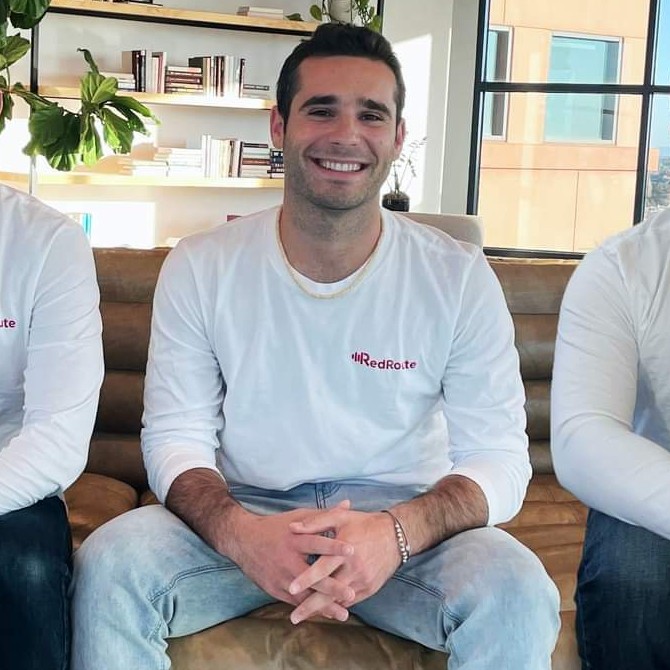
Brian Schiff
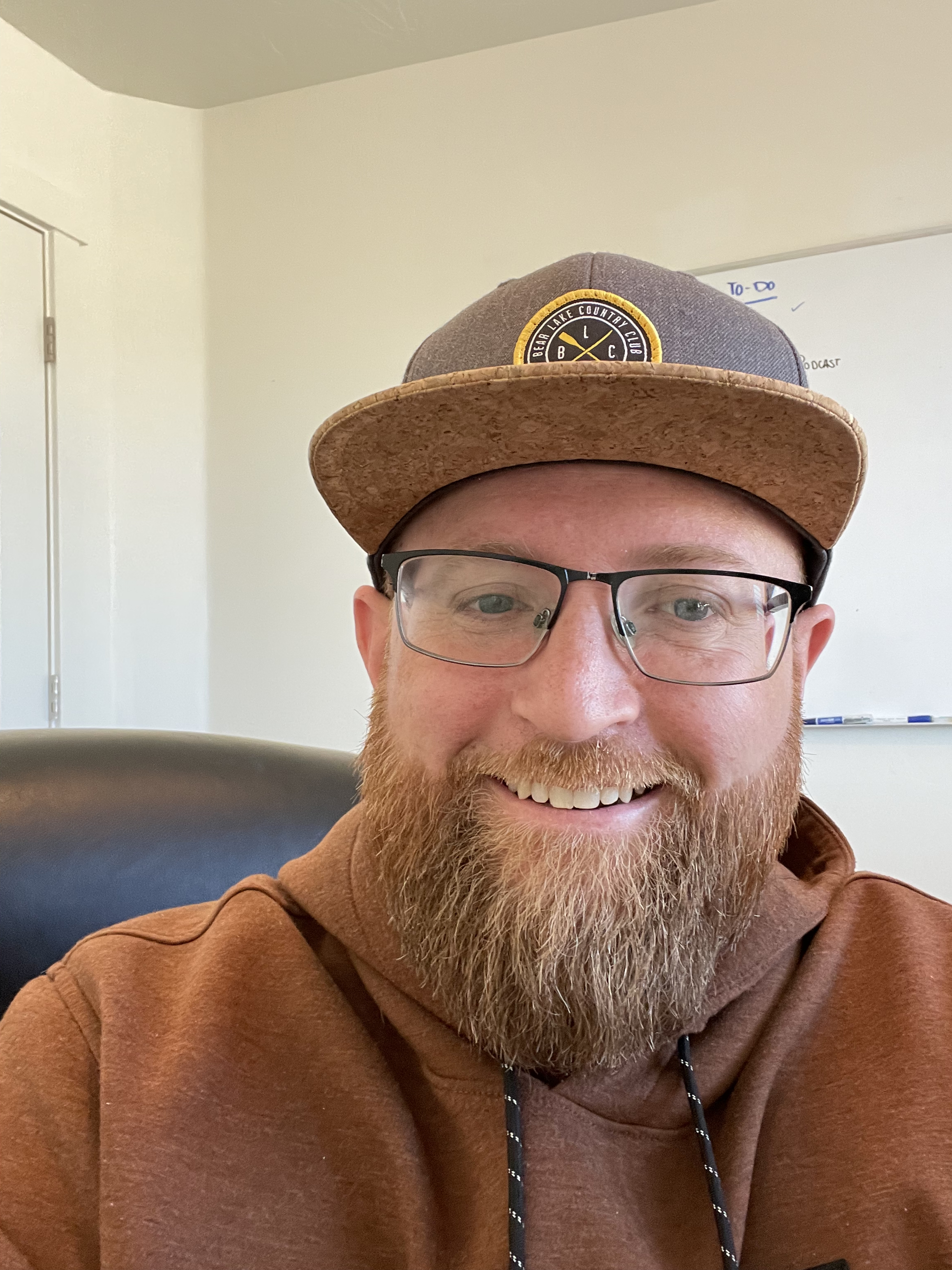
James Gilbert
Today's Guests


